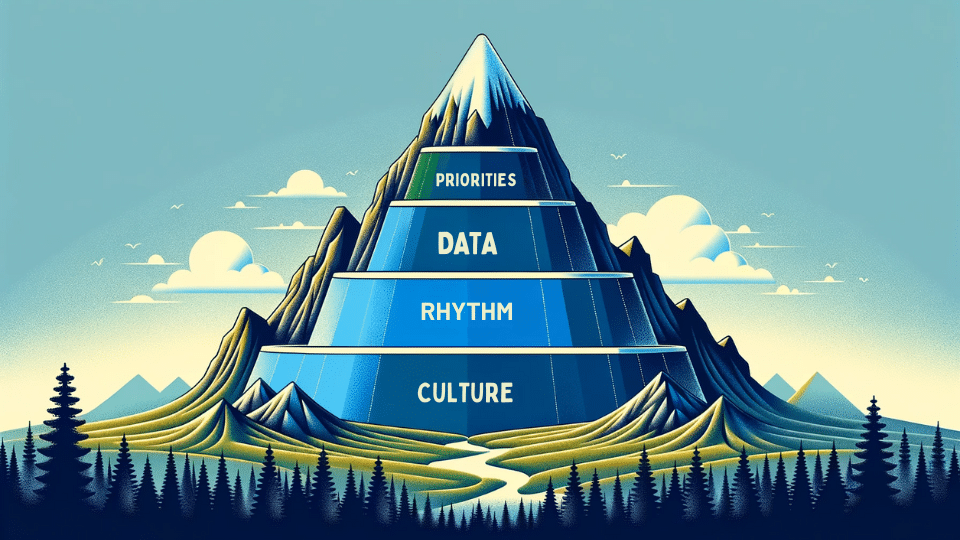Scaling 101: The Fundamentals of Scaling a Business
Scaling a business is akin to ascending the world’s tallest peaks. As you climb higher, the challenges intensify, but the panoramic view from the summit — a testament to your hard work and perseverance — is incomparable. So, how can one ensure that this ascent is more of a thrilling hike and less of a perilous trek? This is where the renowned “Rockefeller Habits” come into play. Highly respected in the entrepreneurial realm, these habits, though acknowledged, often remain enigmatic to many.
What are the Rockefeller Habits?
At the dawn of the 20th century, John D. Rockefeller, whose name became synonymous with wealth and business acumen, instituted a series of habits that were foundational in magnifying his expansive business conglomerate. As we ushered in the new millennium, these foundational habits underwent a transformation and are contemporarily known as the “Scaling Up” methodology.
To distill it down, the Rockefeller Habits represent a compendium of practices and tenets that enterprises can integrate to ensure consistent growth, fortify organizational cohesion, and carve a trajectory toward enduring success.
Key Principles of the Rockefeller Habits:
Directional Clarity (Priorities): Charting the course is paramount. Whether you’re orchestrating a 90-day tactical blueprint or envisioning a decade-long strategic horizon, having an unwavering directional compass ensures collective alignment.
Real-world Analogy: Reflect upon Apple’s unwavering commitment during the seminal launch of the iPhone. Their guiding star? To radically redefine communication. The aftermath of this commitment is evident in the ubiquity of smartphones today.
Empirical Decision-making (Data): Harness metrics and Key Performance Indicators (KPIs) to gauge organizational efficacy. This empirical approach ensures every stakeholder comprehends their role and its contribution to the grand vision.
Real-world Analogy: Amazon’s relentless drive towards customer-centricity, exemplified by their meticulous tracking of delivery times, underscores their commitment to perpetual refinement.
Synchronized Cadence (Rhythm): Cultivate a consistent tempo of interactions. Be it daily touchpoints, monthly retrospectives, or quarterly strategy sessions, these rhythmic engagements ensure organizational harmony.
Real-world Analogy: Google’s iconic ‘TGIF’ congregations weren’t mere corporate rituals. They were instrumental in fostering alignment, celebrating milestones, and addressing impediments.
Cultural Cohesion (Culture): An indomitable, shared ethos acts as the organizational adhesive, ensuring concerted efforts towards common goals.
Real-world Analogy: Starbucks’ deliberate choice of the term “partner” over “employee” accentuates their ethos of mutual respect, inclusivity, and shared ownership.
How to Implement the Rockefeller Habits:
Embark Incrementally: Initiate by crystallizing quarterly objectives. As the organizational fabric gets attuned, you can progressively incorporate additional facets.
Data Sovereignty: Pinpoint pivotal metrics that resonate with your enterprise’s mission. Then, monitor these with unwavering dedication.
Unwavering Regularity: Irrespective of the nature of the activity, be it deliberations or data analytics, consistency is the linchpin. It cultivates alignment and obviates ambiguity.
Holistic Inclusivity: Whether it’s the boardroom luminary or the newest intern, holistic engagement ensures everyone is cognizant of, and contributive to, the scaling voyage.
In summation, scaling an enterprise is akin to mastering a symphony — it requires coordination, commitment, and, above all, a clear conductor (or guiding principles). With the Rockefeller Habits as your maestro, the magnum opus of business growth is not just an aspiration but a foreseeable reality. And what better way to implement this business operating method with a business operating system like Align.





